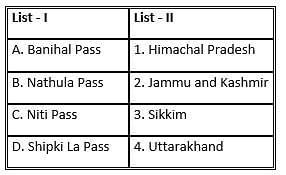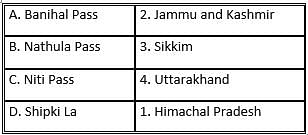Uttar Pradesh Judicial Services Prelims Paper 1 Mock Test - 5 - Judiciary Exams MCQ
30 Questions MCQ Test Uttar Pradesh Judicial Services Mock Test Series 2024 - Uttar Pradesh Judicial Services Prelims Paper 1 Mock Test - 5
Which city of India is known as the 'Queen of Mountains'?
The Reserve Bank of India (RBI) decided to use GDP instead of GVA to measure economic activity in India. GVA stands for
Nirmal Gram Puraskar is associated with
Consider the below given statements:
1. It is also known as seven-year war.
2. It spread from southern India into Bengal.
3. It concluded with the Treaty of Paris.
Which of the following wars has been referred to?
Directions: Given below are two statements, one labelled as "Assertion (A)" and the other as "Reason (R)". Read the statements carefully and choose the correct option accordingly.
Assertion (A): Indian constitution provides for Centre to control over legislative matters of the State.
Reason (R): Certain bills from the subject of state list can be introduced in state legislature with prior sanction of the President.
In light of statements below, choose the correct answer:
1. Article 216 of Indian Constitution provides that every High Court shall be court of record.
2. Court of record is power of the court to punish for its contempt.
The Central Government amended a 50-year-old rule and allowed IAS, IPS and IFoS officers to retain gifts they receive from foreign dignitaries while being members of the Indian delegation.
Previously, no member of the service could accept any gift without government's sanctions if the value of those gift exceeds ________.
Directions: Match the following.

Consider the following statements in light of Controller General of Accounts and answer which of these are correct:
1. The Office of Controller General of Accounts was established in 1976.
2. He heads the new accounting structure of the Central Government.
3. He ensures accuracy of accounts and efficiency of financial operations.
Consider the following statements in the context of rise of Islam in India:
1. Muhammad Ghori's slave commanders combined best of military practices of both Ghaznavids and the Indians.
2. The main objective of the invasions of Mahmud Ghazni to India was propagation of Islam only.
Which of the statements given above is/are correct?
India is divided into how many natural regions?
On what percentage of the total agricultural land food crops are grown in India?



















